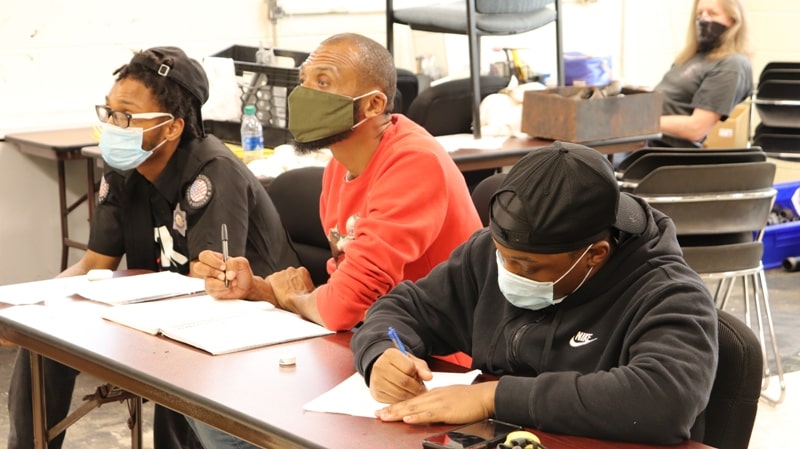Pipe fitting is an essential skilled trade in the construction and manufacturing industries. It involves the installation, repair, and maintenance of various piping systems, including water, gas, and oil pipelines. The job of a pipe fitter is to ensure that the piping systems are installed correctly, operate safely, and are maintained effectively. To become a skilled pipe fitter, one needs to complete a comprehensive pipe fitting training program.
Pipe fitting training programs are designed to provide students with the knowledge, skills, and practical experience needed to become successful pipe fitters. These programs cover a wide range of topics, including piping system design, installation, maintenance, and repair. They also cover safety procedures, welding techniques, and other related skills.
Objectives Of Pipe Fitting Training
One of the key objectives of pipe fitter certificate programs is to ensure quality workmanship. This means that the programs are designed to ensure that students receive the necessary training and hands-on experience needed to become competent and skilled pipe fitters. In this article, we will explore how pipe fitting training programs ensure quality workmanship.
Curriculum Design
The first step in quality ensuring workmanship in pipe fitting training programs is to design a comprehensive curriculum. The curriculum should cover all aspects of pipe fitting, including theoretical knowledge, practical skills, and safety procedures. It should also provide students with opportunities to apply their knowledge and skills in real-world situations.
The curriculum should be designed by experienced pipe fitters, engineers, and instructors who have a thorough understanding of the trade. They should be able to identify the essential skills and knowledge needed to become a successful pipe fitter and design a program that covers these areas in detail.
The curriculum should also be regularly updated to reflect changes in industry standards and technology. This ensures that students receive the most up-to-date training and are prepared to work in the rapidly changing world of pipe fitting.
Instructor Qualifications
The second step in quality ensuring workmanship in pipe fitting training programs is to ensure that the instructors are highly qualified and experienced. The instructors should have a thorough understanding of the trade, including the latest techniques and technologies. They should also have hands-on experience in installing, repairing, and maintaining piping systems.
Instructors at pipe fitter certificate programs should also be trained in teaching methods that are effective in helping students learn and retain information. They should be able to provide clear explanations, answer questions, and provide feedback to students.
In addition to qualifications and experience, instructors should also have a passion for teaching and a desire to help students succeed. This ensures that students receive high-quality instruction that prepares them for success in their careers.
Hands-On Training
The third step in quality ensuring workmanship in pipe fitting training programs is to provide students with hands-on training. This involves giving students the opportunity to apply their theoretical knowledge and practical skills in real-world situations.
Hands-on training should be designed to simulate real-world conditions as much as possible. This ensures that students are prepared for the challenges and demands of working as a pipefitter. It also helps students develop the confidence and problem-solving skills needed to excel in their careers.
Hands-on training in pipe fitting at vocational colleges should be supervised by experienced instructors who can provide guidance and feedback to students. This ensures that students receive the necessary support to develop their skills and improve their workmanship.
Safety Procedures
The fourth step in quality ensuring workmanship in pipe fitting training programs is to emphasize safety procedures. Pipe fitting is a hazardous trade that involves working with high-pressure piping systems and potentially hazardous materials. Therefore, it is essential that students receive thorough training in safety procedures to ensure their safety and the safety of those around them.
Safety training should cover topics such as personal protective equipment, hazard identification, and emergency procedures. It should also emphasize the importance of following safety procedures at all times and provide students with practical experience in implementing these procedures.
Proper Tools Usage
In pipe fitting classes, students are trained to work with a wide range of tools and equipment, from wrenches and hammers to welding machines and cutting tools. Proper use of these tools is essential to ensure that the piping systems are installed correctly and operate safely.
One of the most critical aspects of proper tool use is selecting the right tool for the job. Different piping systems and components require different types of tools and equipment, and using the wrong tool can result in damage to the piping system or injury to the worker.
Once the correct tool has been selected, it is important to use it correctly. This involves following manufacturer instructions, maintaining the tool in good working condition, and using it in a safe and efficient manner..
Quality Control
Pipe fitting programs are essential for ensuring quality control in a wide range of industries that involve the use of pipes for transporting fluids, gasses, and other substances. Pipefitting involves the installation and maintenance of piping systems, including fittings, valves, and other components. The proper installation and maintenance of these systems is critical to ensuring that they function safely and efficiently, which is why pipefitting programs are so important.
Pipe fitting classes provide training and education to individuals who are interested in pursuing a career in this field. This training covers topics such as safety procedures, reading and interpreting blueprints and schematics, pipe fabrication, and installation techniques. By providing this education and training, pipefitting programs ensure that professionals in this field have the skills and knowledge they need to perform their jobs effectively and safely.
In addition to providing training and education, pipe fitting training programs also help to establish and maintain industry standards for quality control. These standards ensure that piping systems are designed, installed, and maintained in accordance with best practices, which helps to minimize the risk of leaks, ruptures, and other safety hazards.
Effective Communication
Pipefitting training plays a vital role in ensuring effective communication in the industry. Communication is critical in any construction project, especially when dealing with complex piping systems that require coordination between different trades and teams. Pipefitting training ensures that workers are equipped with the necessary skills to communicate effectively with their peers, supervisors, and clients.
Effective communication skills are essential in pipefitting because workers need to be able to convey information accurately and clearly to others. This includes being able to read and interpret blueprints and schematics, communicate effectively with other tradespeople, and provide updates to project managers and clients.
Vocational training programs for pipe fitting provide workers with the necessary skills to communicate effectively by emphasizing the importance of clear and concise communication. These programs teach workers how to read and interpret technical documents, how to communicate with different types of stakeholders, and how to use common communication tools, such as email and project management software.
Up-To-Date With Technologies
Pipe fitting training programs help workers stay current with the latest technologies by providing them with hands-on experience and training in the latest tools, equipment, and techniques. These programs also introduce workers to new materials, such as composite pipes and fittings, which can offer improved durability, corrosion resistance, and other benefits.
In addition to providing training on the latest technologies, pipe fitting programs also help workers understand the importance of ongoing learning and professional development. Workers are encouraged to stay up-to-date with new technologies and techniques by attending workshops, conferences, and other industry events.
Furthermore, vocational college programs also ensure that workers are familiar with the latest safety standards and regulations. With the increasing emphasis on safety in the construction industry, it is crucial that workers are trained on the latest safety standards and regulations to minimize the risk of accidents and injuries.
Development Of Transferable Skills
Pipe fitting classes programs not only provide workers with the technical skills necessary for the job, but they also promote the development of transferable skills. Transferable skills are abilities that can be applied across different industries, jobs, and situations. These skills are essential for long-term career success and can make workers more competitive in the job market.
Pipe fitter certificate programs help workers develop transferable skills by emphasizing the importance of communication, teamwork, problem-solving, adaptability, and leadership. These skills are essential in many industries and can help workers succeed in a variety of roles.
Conclusion
If you’re looking to start a career in pipefitting, enroll in a pipe fitting training program at PTTI now. Our comprehensive skilled trades training program will equip you with the skills and knowledge necessary to succeed in this rewarding field. With hands-on experience and industry certification, you’ll be prepared for a range of job opportunities and a successful career in the construction industry.

